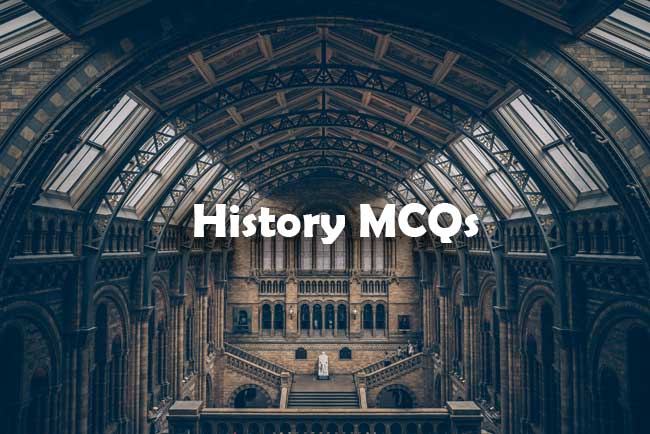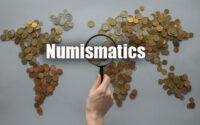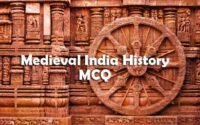SSC MTS Exam General Awareness History Questions and Answers
Have you applied for the Staff Selection Commission Multitasking Staff Recruitment? And Searching for the MTS General Awareness History Previous Year Question Papers. Then you are at the right Place to download the SSC MTS General Awareness History Previous Papers Pdf at free of cost.

For all the applied candidates, we provided the Last 5 years SSC MTS History Old Question Papers. Candidates who applied for these Jobs and started their Exam Preparation can download the provided SSC MTS History Previous Papers Pdf and Practice them.
On this Page, we have provided the free downloading Links of SSC Multitasking Staff General Awareness History Previous Question Papers. Hence download the SSC MTS General Awareness History Previous Papers from the links enclosed below.
General Awareness History Questions and Answers for SSC MTS Exam
1. In Mughal administration, the governor of a port was called………, while the chief collector of customs was called……………………….
(A) Kotwal, mutasaddi
(B) Mutasaddi, shahbandar
(C) Shahbandar, mutasaddi
(D) Mutasaddi, kotwal
2. The system of nazar-pahani as a method of revenue assessment and collection was initiated by…………….
(A) Mahmud Gawan
(B) Raja Todar Mal
(C) Malik Ambar
(D) Malik Kafur
3. ………………..is to measurement of land in Maharashtra as………………… is to measurement of land in north India.
(A) Gaz, ilahi
(B) Kathi, jarib
(C) Bigha, biswa
(D) Tansu, jital
4. Chhatrapati Shivaji Maharaj came into conflict with the Mughals for the first time in………………………
(A) 1655
(B) 1657
(C) 1659
(D) 1661
5. Vangi in medieval Maharashtra was an additional tax on :
(A) The brinjal harvest
(B) Metal lamps supplied to a temple
(C) Merchants
(D) Bamboos brought in for sale in a village fair
6. The Mirat-i-Ahmadi has the word ‘talpat’. What does the word mean ?
(A) State property, equivalent to Khalisa land
(B) Community owned property in the tribal areas
(C) Land owned by individual peasants
(D) Land that could be assigned in Jagir
7. Which city was also known as khujista buniyad in the 17th century ?
(A) Burhanpur
(B) Bidar
(C) Ahmednagar
(D) Aurangabad
8. Maratha attack on Salsette in 1730 was repulsed by :
(A) The Portuguese
(B) The English and the French
(C) The English
(D) The English and Portuguese
9. The Marathi chronology entitled Pargana Wai Yadinama is important as a source because :
(A) It is based on Ferishta’s work in Wai
(B) It gives the names of officers in Wai
(C) It gives an account of the Peshwa’s jagirs in Wai
(D) It gives details of Chhatrapati Shivaji Maharaj’s conquests around Wai
10. Who among the following Bhakti saints also provides information on aspects of Mughal administration ?
(A) Surdas and Dadu Dayal
(B) Surdas and Mirabai
(C) Mirabai and Sant Namdev
(D) Sant Namdev and Sant Kabir
11. In which south Indian source do we get information about the invasion of Nadir Shah ?
(A) The Tuzuk-i-Walajahi
(B) The Diary of Ananda Ranga Pillai
(C) The Report on the Zamindars of Sivaganga
(D) The report on the rebellion of Yachama Nayak
12. Who was the first collector of Khandesh ?
(A) Henry Pottinger
(B) John Briggs
(C) Chaplin
(D) Robertson
13. Who among the following said, ‘‘the armour of the isolated self-sufficient village was pierced by the steel rail, and its life blood ebbed away’’ ?
(A) R. C. Dutt
(B) Dadabhai Naoroji
(C) D.H. Buchanan
(D) Sir Thomas Munro
14. Before 1857, the highest post in the civil administration of the East India Company that an Indian could occupy was :
(A) Subhedar
(B) Sadr-i-Amin
(C) Mamlatdar
(D) Sipah Salar
15. ……………………was the first Indian to be made a fellow of the Royal Society of London.
(A) Ardeshir Cursetjee
(B) Behramjee Malbari
(C) Nowrosjee Wadia
(D) Jamshetji Tata
16. Who among the following complained to the British Government that one third of Bengal had been transformed into ‘‘a jungle inhabited only by wild beasts’’ ?
(A) Warren Hastings
(B) Lord Cornwallis
(C) William Bentinck
(D) Lord Ripon
17. Thomas Babington Macaulay started his career as the………………..
(A) Historian
(B) Lawyer
(C) Economist
(D) Educationalist
18. Who among the following was a founder of Widow Marriage Association in 1861 ?
(A) Debendranath Tagore
(B) Mahadev Govind Ranade
(C) Surendranath Banerjee
(D) Swami Dayanand Saraswati
19. Dadabhai Naoroji worked as a Professor of…………………at University College, London.
(A) Economics
(B) Political Science
(C) Gujarati
(D) Philosophy
20. In 1883 who among the following described India as a mere ‘geographical expression’ with no sense whatever of national unity ?
(A) J.R. Seeley
(B) John Strachey
(C) Macaulay
(D) Lord Dufferin
|
More History Questions for Preparation
|
|
| UPSC | TNPSC |
| GPSC | WBCS |
| NDA | SSC CHSL |
| DSSB | SSC CGL |
| AFCAT | MTS |
| RRB NTPC | MPSC |
| MPPSC | CDS |
| BPSC | |
21. Who opened a Widow home at Pune, formed a widow remarriage association, married a widow in 1893 and in 1916 founded a Women’s University in Bombay ?
(A) M.G. Ranade
(B) D.K. Karve
(C) Bal Gangadhar Tilak
(D) G.V. Joshi
22. Who among the following was not part of the ‘Panchkathiya’ system agitation ?
(A) Sheikh Gulab
(B) Harbans Sahay
(C) Pir Mohammad Munsi
(D) Rajendra Prasad
23. Badruddin Tyabji presided over the Congress Session held at :
(A) Madras
(B) Mumbai
(C) Delhi
(D) Lahore
24. Ganesh Gosh was associated with :
(A) Lahore conspiracy case
(B) Kakori case
(C) Chittagon Armour Raid Case
(D) Bomb assault in Muzaffarpur
25. Who among the following had, while fasting in the prison, written to the British governor, ‘‘The individual must die so that the nation may live. Today, I must die so that India may win freedom and glory’’ ?
(A) Jatin Das
(B) Lala Lajpat Rai
(C) M.K. Gandhi
(D) S.C. Bose
26. The first session of All India Trade Congress in Bombay in 1920 was presided over by :
(A) Jawaharlal Nehru
(B) V.V. Giri
(C) Lala Lajpat Rai
(D) N.M. Joshi
27. ‘‘If our goal is to take Mother India to new heights in the world, then the first condition for that is unity, peace and harmony,’’ this slogan was given by :
(A) Mahatma Gandhi
(B) Dr. Ambedkar
(C) Sardar Patel
(D) Subhas Chandra Bose
28. Who was the President of Indian National Congress at the time of Quit India Movement ?
(A) Jawaharlal Nehru
(B) Pattabhi Sitaramayya
(C) Maulana Abul Kalam Azad
(D) J.B. Kripalani
29. Anantrao Chitre was a leader of this movement that took place in 1944 in Bombay :
(A) Dock Workers’ Strike
(B) Naval Mutiny
(C) Salt Satyagraha
(D) Mill Workers’ Strike
30. Maulana Abdul Bari belonged to the :
(A) Aligarh School
(B) Deoband Madarsa
(C) Firangi Mahal School
(D) Nadwat-ul-Ulema
31. The inspirational leader behind the founding of the All India Women’s Conference was :
(A) Durga Bai Deshmukh
(B) Margaret Cousins
(C) Madam Cama
(D) Mutthulaxmi Reddy
32. Who from among the following was a member of the Constituent Assembly ?
(A) Aruna Asaf Ali
(B) Begum Aijaz Rasool
(C) Begum Hazrat Mahal
(D) Begum Samru
33. The only Annual Session of the Congress over which Mahatma Gandhi presided was held at…………..
(A) Pune
(B) Belgaum
(C) Mumbai
(D) Karachi
34. The title Rani was conferred on the Naga leader Gaidinliu by……………….
(A) Mahatma Gandhi
(B) Jawaharlal Nehru
(C) Subhash Chandra Bose
(D) Thakkar Bappa
35. In which year was the Reserve Bank of India established ?
(A) 1930
(B) 1931
(C) 1935
(D) 1940
36. In the Interim Government what department was headed by C. Rajgopalachari ?
(A) Finance
(B) Industries and Supplies
(C) Education
(D) Defence
37. The Bhoodan leader Vinoba Bhave inaugurated the Bhoodan Movement in :
(A) Maharashtra
(B) Bihar
(C) West Bengal
(D) Telangana
38. Who was the first woman to become a central cabinet minister in independent India ?
(A) Sarojini Naidu
(B) Sucheta Kripalani
(C) Aruna Asaf Ali
(D) Rajkumari Amrut Kaur
39. Who among the following historians is well known for his contributions to subaltern studies ?
(A) O.P. Kejriwal
(B) Bipan Chandra
(C) Ranjit Guha
(D) K.N. Panikker
40. Rajabai Tower designed by George Scott is an example of a combination of……………………styles of Architecture.
(A) Scottish and English
(B) Greek and Roman
(C) Venetian and Indian
(D) Venetian and Gothic
| Ancient India | Modern India |
| Medieval India | World History |
41. Who is known as the Architect of Panchayati Raj in India ?
(A) Ashok Mehta
(B) Balwantrai Mehta
(C) Vaikunth Mehta
(D) Pherozeshah Mehta
42. In which of the following English works do we see the first indication of an ‘Orientalist’ attitude ?
(A) The account of Sir Thomas Roe
(B) The Records of Fort St. George, 1672
(C) The Diary of William Hedges
(D) The account of Ralph Fitch
43. The integrative model of the state has been put forward by :
(A) Burton Stein
(B) Herman Kulke
(C) Stephen Blake
(D) R.S. Sharma
44. The process of verifying the authenticity of a source is referred to as………………….
(A) Corroboration
(B) Internal Criticism
(C) Secondary Criticism
(D) External Criticism
45. Which of the following ancient sites is not associated with the Megalithic culture ?
(A) Yellesvaram
(B) Adichanallur
(C) Junnar
(D) Brahmagiri
46. Which of the following sites does not represent the Chalcolithic culture ?
(A) Kayatha
(B) Jorwe
(C) Brahmapuri
(D) Savalda
47. ……………………….. was a Harappan trading post in Afghanistan.
(A) Shortughai
(B) Chanhudaro
(C) KotDiji
(D) Amri
48. Fire-altars are not found from the Harappan site of……………………….
(A) Banavali
(B) Rakhigarhi
(C) Surkotada
(D) Lothal
49. ………………….tribe in Baluchistan speak a language similar to the Tamil language.
(A) Mundas
(B) Brahui
(C) Bhils
(D) Santhals
50. The entry port for trade between the Indus trading centers and Mesopotamia was……………………..
(A) Elam
(B) Bahrain
(C) Oman
(D) Afghanistan


